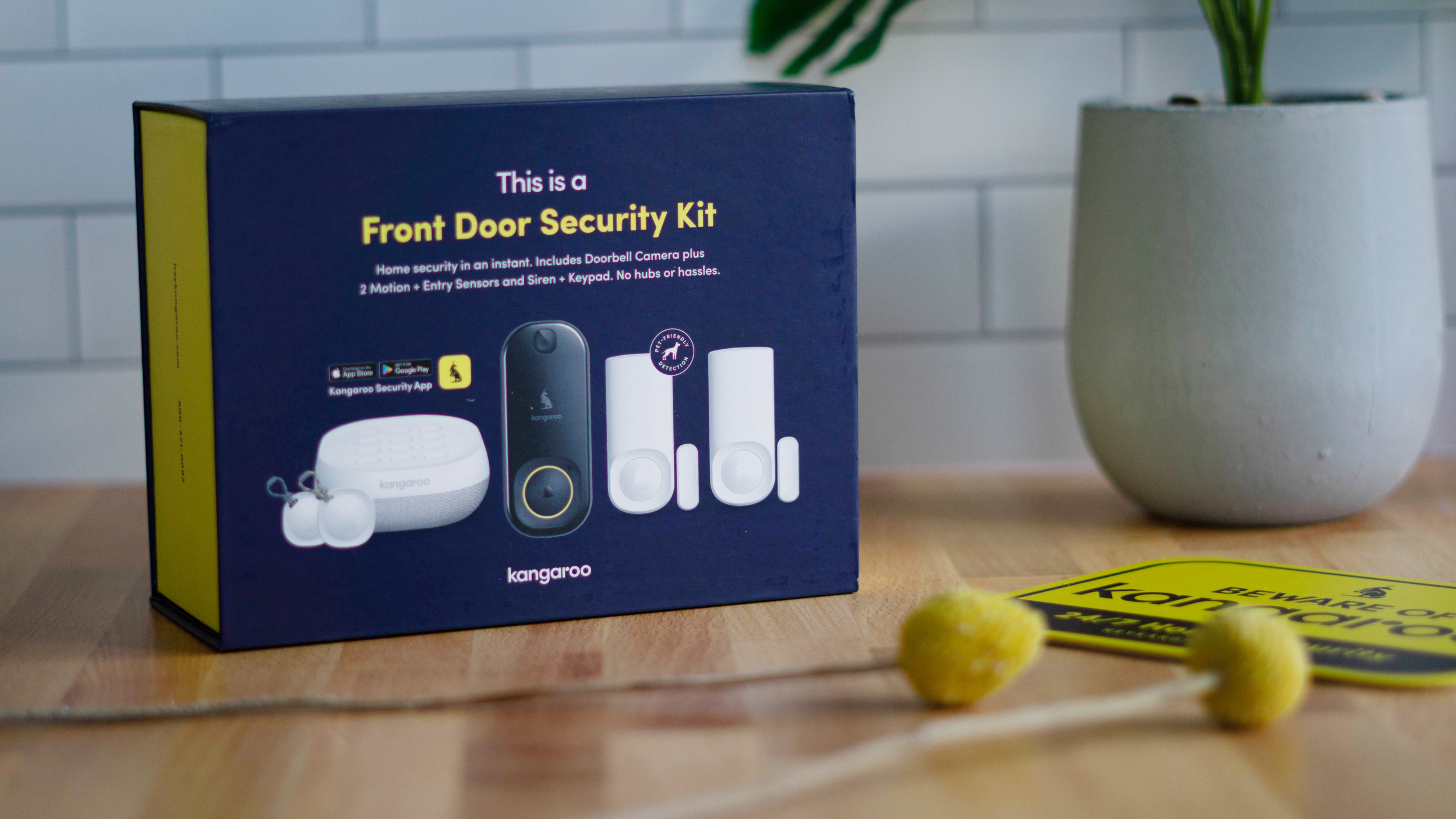Tired of Outdated Home Security? Kangaroo Offers a Refreshing Change
Tired of paying high monthly fees, signing long-term contracts, and drilling holes into your walls just to protect your home? Traditional security companies like ADT, Vivint, and Frontpoint have dominated for years—but there’s a smarter, more flexible way. Kangaroo Home Security offers a refreshingly simple solution with powerful DIY features, all without the complexity.
What Is a Traditional Home Security System?
Traditional home security systems are typically hardwired, professionally installed setups that rely on central monitoring. They often include:
Door/window sensors
Motion detectors
Glass break sensors
A central hub or control panel
While these systems are reliable, they come with high upfront costs, long contracts, and less flexibility.
Traditional VS Smart Home Security
| Feature | Traditional Security | Kangaroo Smart Security |
|---|---|---|
| Installation | Professional, invasive | DIY, no tools required |
| Monitoring | Contract-based | Optional, month-to-month |
| Cost | Expensive upfront + monthly | Affordable, flexible plans |
| Flexibility | Limited customization | Modular and scalable |
| Smart Integration | Varies | Seamless with app |
The Problem with Traditional Home Security
Locked-In Contracts: You're often tied to 2-3 year agreements.
High Equipment Costs: Sensors, base stations, and cameras quickly add up.
Intrusive Installation: Drilling, wiring, and complex setups required.
Limited Portability: Moving often means starting over.
Overkill Features: Many systems bundle in features most homeowners don’t need.
The Kangaroo Advantage
Kangaroo takes a different approach, offering a DIY home security system that's refreshingly simple and surprisingly effective:
No Contracts, No Fuss: Optional Professional Monitoring with Theft and Damage Coverage, Pay month-to-month, Yearly, cancel anytime.
Affordable Equipment: Start with the essentials – indoor and outdoor cameras, door sensors, doorbell camera and a siren – and add more as you need.
Easy Installation: No tools or expertise required. Most devices stick on with adhesive, and setup takes minutes.
Modular and Scalable: Expand your system easily with additional sensors and cameras. Moving? Just take your Kangaroo with you.
Focus on the Essentials: Kangaroo prioritizes the core security features most people need: motion detection, video surveillance, and alerts.
Is Kangaroo Right for You?
Kangaroo is perfect for you if:
You're renting or don't want to commit to long-term contracts.
You want a simple, no-fuss security system you can set up yourself.
You're more interested in core security features than a fully-automated smart home.
You value affordability and flexibility.
Kangaroo vs. ADT, Vivint, and Frontpoint
| Provider | Installation | Monitoring | Cost | Ideal For |
|---|---|---|---|---|
| ADT | Professional | Required |
Equipment: $599–$1,449 Monitoring: $24.99–$49.99/mo |
Traditionalists seeking comprehensive, professionally installed systems |
| Vivint | Professional | Required |
Equipment: $599–$999 Monitoring: $29.99–$49.99/mo |
Smart home enthusiasts desiring advanced automation features |
| Frontpoint | DIY | Required |
Equipment: $387–$1,000+ Monitoring: $49.99/mo |
DIY users wanting professional-grade monitoring without contracts |
| Kangaroo | DIY | Optional |
Equipment: Starting at $39.99 Monitoring: Free or $99/year |
Budget-conscious individuals and renters seeking flexible, no-contract solutions |
The Future of Home Security is Simple
Kangaroo challenges the traditional home security model, proving that you don't need complex systems or hefty contracts to protect your home. If you're looking for a user-friendly, affordable, and effective security solution, Kangaroo might be the game-changer you've been waiting for.
Related Content:
Kangaroo Hops into Walgreens: Easy Home Security Now Just a Hop Away!
Find Peace with these DIY Home Security Solutions for Renters
How the Kangaroo Video Doorbell Elevates Your Home's Security
Frequently Asked Questions
What makes DIY security better for renters?
DIY systems like Kangaroo are wireless and portable—perfect for people who move often or can’t modify their home.
Can I monitor my home from my phone?
Absolutely. The Kangaroo app gives you full control and real-time notifications wherever you are.
Is Kangaroo smart home compatible?
Yes, Kangaroo integrates with major smart devices and voice assistants for seamless control
The Future of Home Security is Here—and It’s Kangaroo
You don’t need complicated contracts or expensive equipment to protect your home. With Kangaroo, smart, affordable, DIY home security is finally accessible to everyone.








